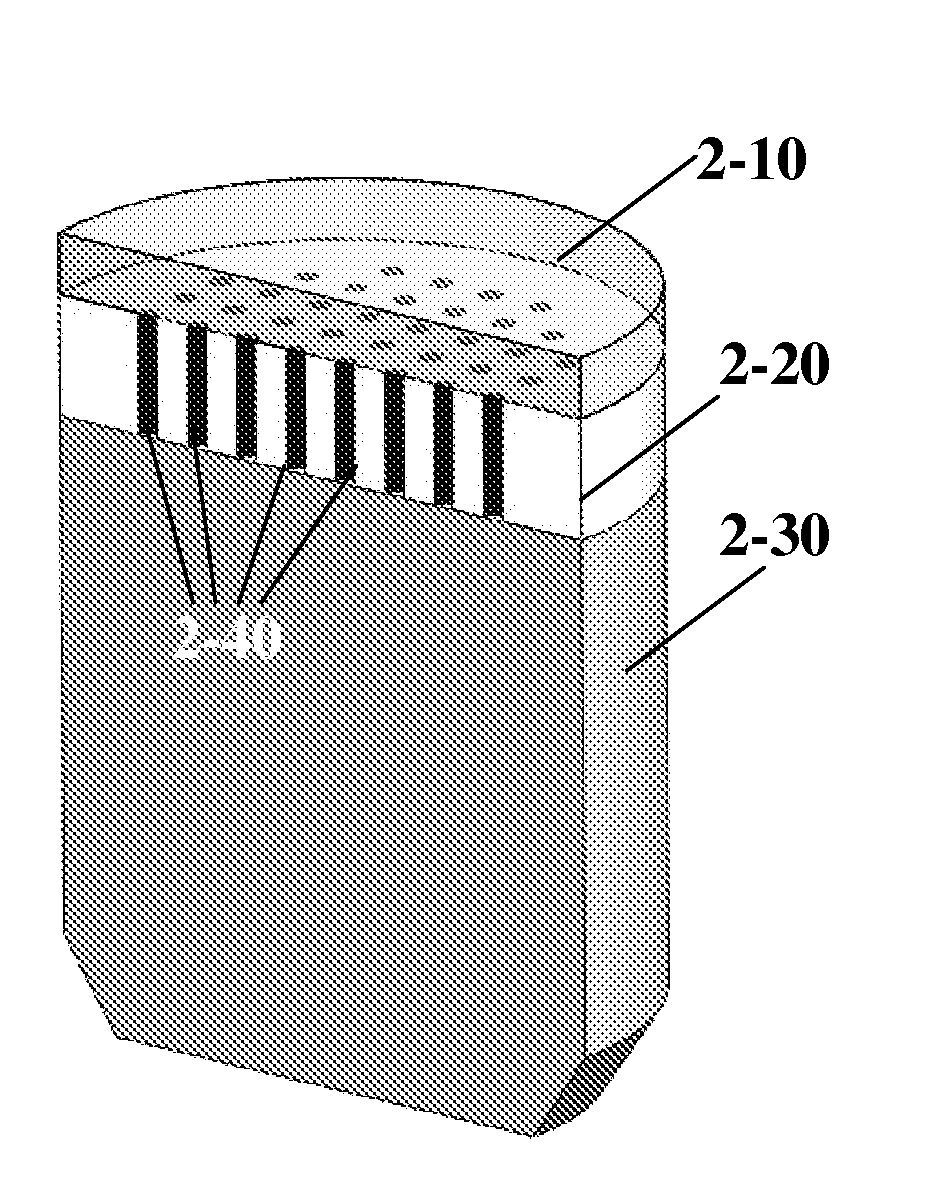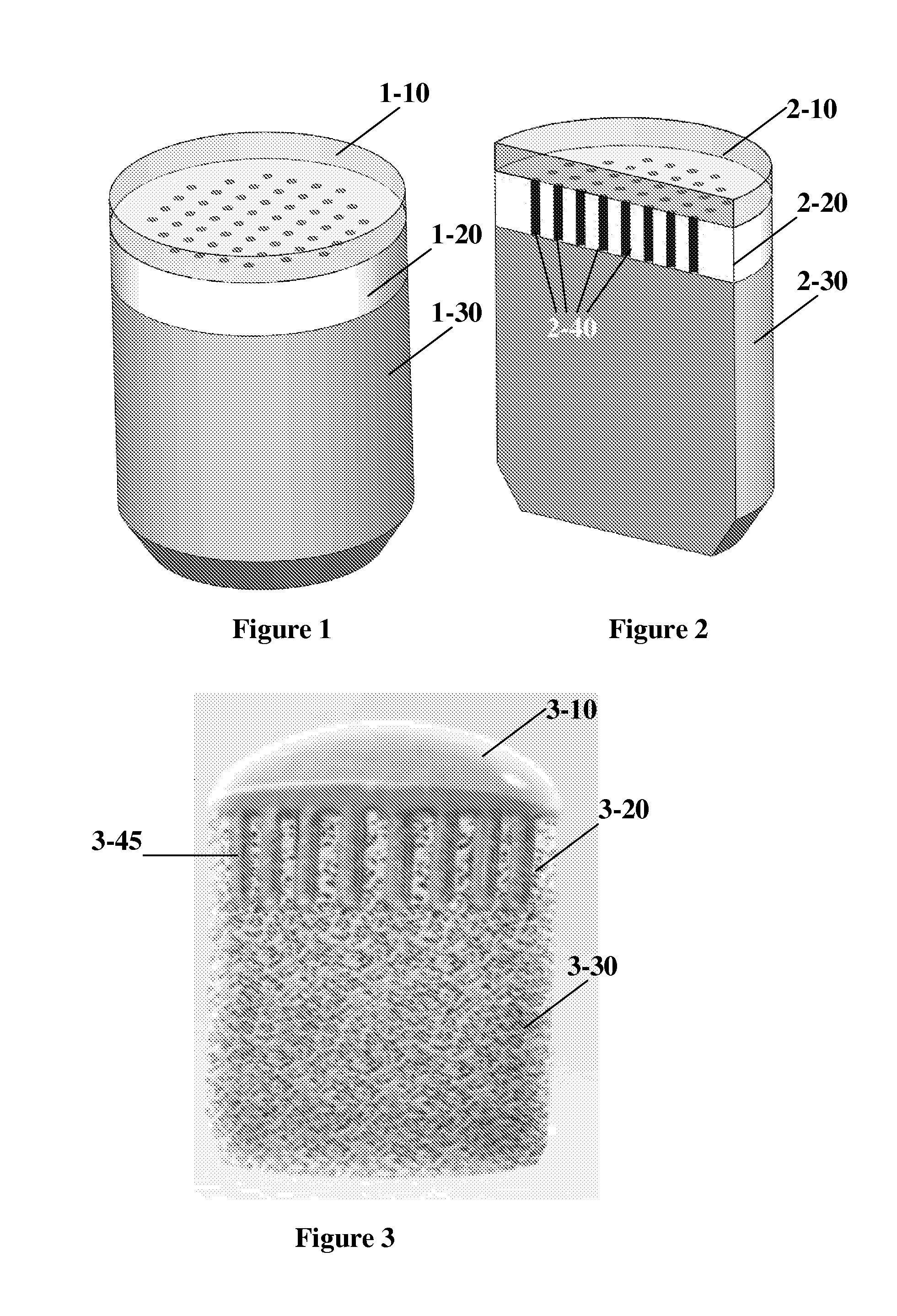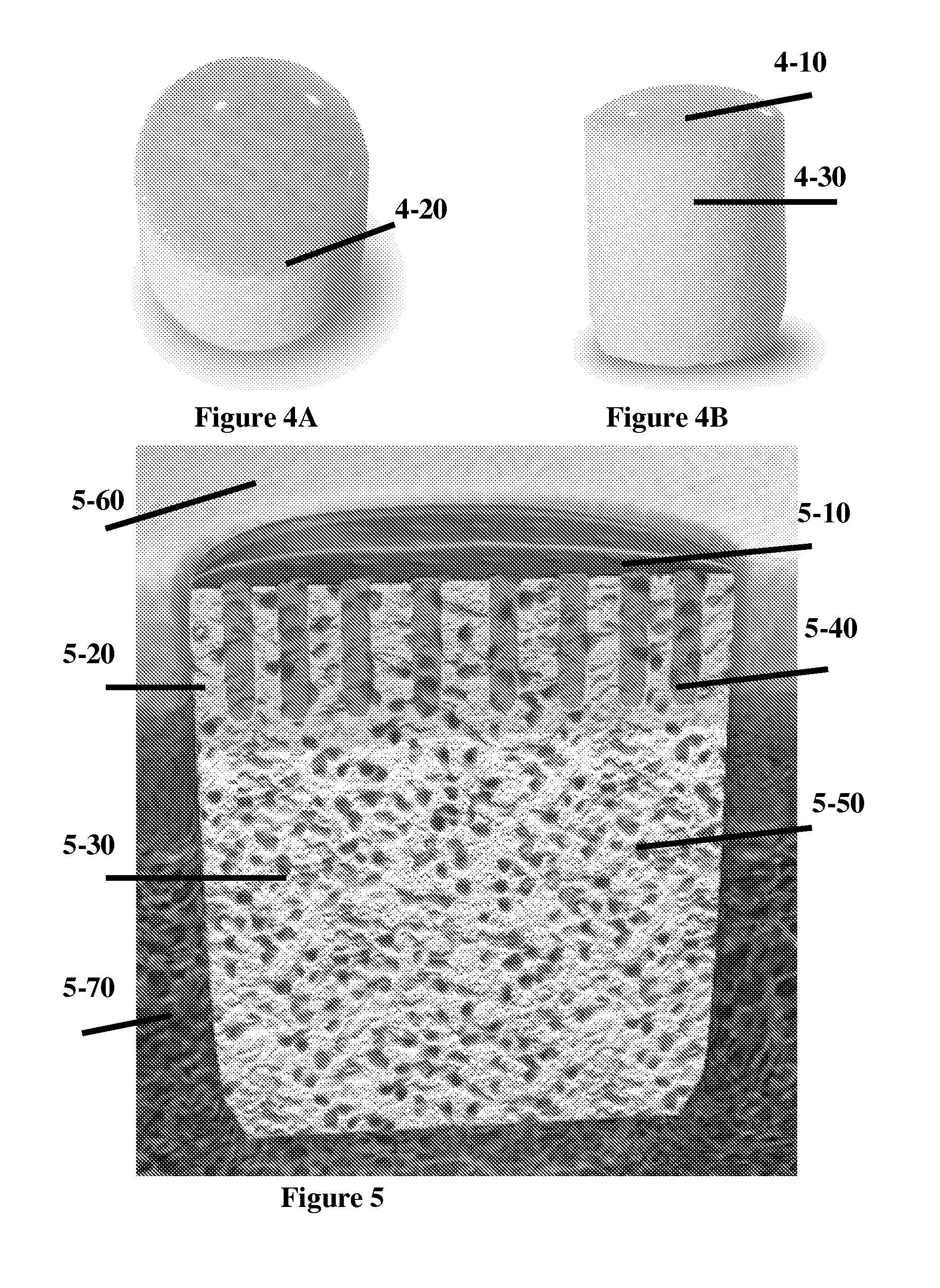Mulit-Phasic Solid Implants for Tissue Repair
a solid implant and tissue repair technology, applied in the field of mulit-phasic solid implants for tissue repair, can solve the problems of significant morbidity associated with autograft harvest sites, nerve damage, cosmetic disability, and loss of function, and achieve the effect of enhancing repair and enhancing cartilage formation
- Summary
- Abstract
- Description
- Claims
- Application Information
AI Technical Summary
Benefits of technology
Problems solved by technology
Method used
Image
Examples
example 1
Applications of Coralline-Based Scaffolding of this Invention
[0283]Coralline-based scaffolding of this invention may be inserted into cartilage, bone or a combination thereof, in a subject in need thereof.
[0284]In some embodiments, such placement will include drilling in the area to expose the site in which implantation is desired, and tight fitting of the solid substrate within the defect / site.
[0285]For implantation for cartilage repair, regeneration, etc., solid substrates are implanted in the desired cartilage site, and within proximally located bone, so that, in this way, the coral solid substrate is grafted through two types of tissue, cartilage and bone.
[0286]FIGS. 1-3 schematically depicts illustrations of embodied solid substrates of this invention, indicating the presence of the first, second and third phases, respectively (1-10, 2-10 and 3-10; 1-20, 2-20 and 2-20; and 1-30, 2-30 and 3-30). The series of hollows 2-40 is evident, as is its impregnation with the second biocom...
PUM
| Property | Measurement | Unit |
|---|---|---|
| contact angle | aaaaa | aaaaa |
| diameter | aaaaa | aaaaa |
| diameter | aaaaa | aaaaa |
Abstract
Description
Claims
Application Information
 Login to View More
Login to View More - R&D
- Intellectual Property
- Life Sciences
- Materials
- Tech Scout
- Unparalleled Data Quality
- Higher Quality Content
- 60% Fewer Hallucinations
Browse by: Latest US Patents, China's latest patents, Technical Efficacy Thesaurus, Application Domain, Technology Topic, Popular Technical Reports.
© 2025 PatSnap. All rights reserved.Legal|Privacy policy|Modern Slavery Act Transparency Statement|Sitemap|About US| Contact US: help@patsnap.com



